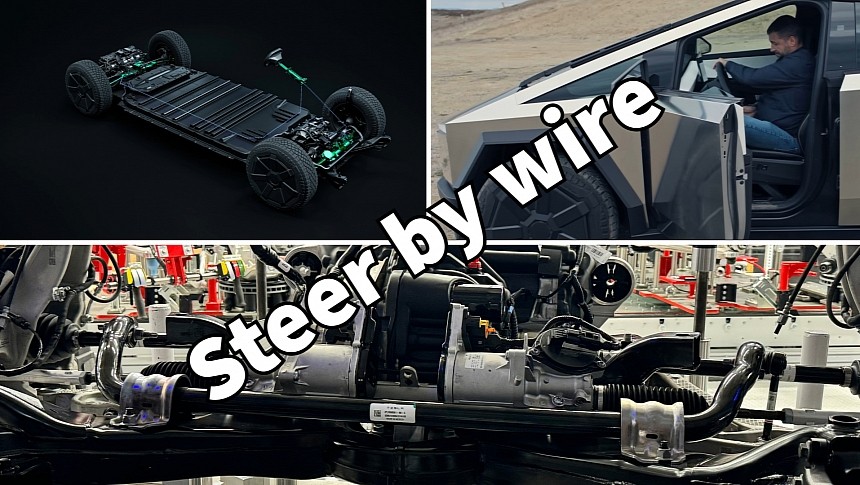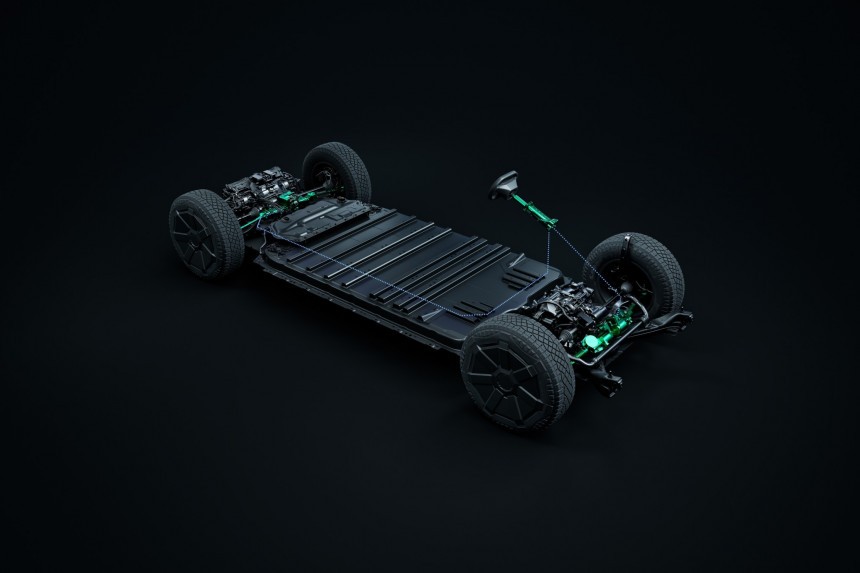Tesla announced that the Cybertruck would be its first vehicle with a steer-by-wire system. This means there's no physical connection between the steering wheel and the front (and rear) wheels. This new concept makes people worry that the Cybertruck might not be safe or practical if the system fails.
Tesla was inspired by aviation when designing and marketing its electric vehicles. It's not by chance that it named its signature driver assist system "Autopilot." Even though Tesla Autopilot and the automated flying systems have very few things in common, Tesla imagined a time when its vehicles would drive themselves. Predictably, this prompted it to name its automated driving system "Full Self-Driving." So far, it's more like "partly self-driving," and the EV maker introduced a new concept, dubbed "supervised self-driving."
With the launch of the Cybertruck, Tesla borrowed another page from aviation and designed a steer-by-wire system. This means that the steering wheel has no physical connection to the wheels. Instead, the steering wheel movements are translated into electrical impulses replicated downstream by actuators. A low-latency communication system ensures that the wheels repeat the steering commands with no perceived lag.
Modern airliners work similarly by recording yoke and pedal movements and actuating the control surfaces in the wings and rudder. Because of the sheer size of a commercial aircraft (and the forces involved), these surfaces are controlled hydraulically. However, airplanes use so-called double redundancy, which is when every critical system has at least two backup systems in case it fails. However, cars are built to much lesser safety standards.
This is why people freaked out when they learned that the Cybertruck has a steer-by-wire system. Many wonder if Tesla has made this system as safe as possible. Even if it did, people are still intrigued about what could happen if the system malfunctions. Having a PlayStation steering wheel is no fun if you can't convince it to turn the truck's wheels. But some are also intrigued about why Tesla chose a steer-by-wire system in the first place.
The truth is that Tesla had to feature such a system for the Cybertruck, at least for the rear wheel steering system. All-wheel-steering systems (AWS) are complicated, and having the rear wheels physically connected to the front wheels for steering purposes doesn't make sense. This is why most AWS vehicles feature a steer-by-wire system for the rear wheels. Tesla wanted to go one step further and feature a similar design for the front wheels.
The main advantage is that you can eliminate the physical components that connect the steering wheel to the steering gear and the wheels. This translates into lower weight and lower costs. The downside is that the steer-by-wire system can introduce a lag. This can be mitigated by using low-latency communications, and we know the Cybertruck features a Gigabit ethernet system to move data around. In this case, the latency is too small to be perceptible, or so the first reviewers claim.
Tesla is known for using redundancy in its systems, which is why the Autopilot computer features two identical chips. We have no reason to believe the steer-by-wire is any different, and it might even have double redundancy, like the airplanes. Still, this hasn't prevented people from asking legitimate questions in case this system fails.
One of the scenarios would be when the Cybertruck's battery runs out completely, and there's no power to move the wheels. The simple answer is that the steering system runs on the 48-volt low-voltage battery, and it's also connected to the truck's high-voltage battery. Although unconfirmed, Tesla will also likely feature two steering motors with dedicated low-voltage battery backups.
It's doubtful that all these backup systems will die at the same time, and it's impossible to happen while driving unless something catastrophic occurs. After all, how many times has it happened for an airplane's fly-by-wire system to fail?
With the launch of the Cybertruck, Tesla borrowed another page from aviation and designed a steer-by-wire system. This means that the steering wheel has no physical connection to the wheels. Instead, the steering wheel movements are translated into electrical impulses replicated downstream by actuators. A low-latency communication system ensures that the wheels repeat the steering commands with no perceived lag.
Modern airliners work similarly by recording yoke and pedal movements and actuating the control surfaces in the wings and rudder. Because of the sheer size of a commercial aircraft (and the forces involved), these surfaces are controlled hydraulically. However, airplanes use so-called double redundancy, which is when every critical system has at least two backup systems in case it fails. However, cars are built to much lesser safety standards.
This is why people freaked out when they learned that the Cybertruck has a steer-by-wire system. Many wonder if Tesla has made this system as safe as possible. Even if it did, people are still intrigued about what could happen if the system malfunctions. Having a PlayStation steering wheel is no fun if you can't convince it to turn the truck's wheels. But some are also intrigued about why Tesla chose a steer-by-wire system in the first place.
The main advantage is that you can eliminate the physical components that connect the steering wheel to the steering gear and the wheels. This translates into lower weight and lower costs. The downside is that the steer-by-wire system can introduce a lag. This can be mitigated by using low-latency communications, and we know the Cybertruck features a Gigabit ethernet system to move data around. In this case, the latency is too small to be perceptible, or so the first reviewers claim.
Tesla is known for using redundancy in its systems, which is why the Autopilot computer features two identical chips. We have no reason to believe the steer-by-wire is any different, and it might even have double redundancy, like the airplanes. Still, this hasn't prevented people from asking legitimate questions in case this system fails.
One of the scenarios would be when the Cybertruck's battery runs out completely, and there's no power to move the wheels. The simple answer is that the steering system runs on the 48-volt low-voltage battery, and it's also connected to the truck's high-voltage battery. Although unconfirmed, Tesla will also likely feature two steering motors with dedicated low-voltage battery backups.
It's doubtful that all these backup systems will die at the same time, and it's impossible to happen while driving unless something catastrophic occurs. After all, how many times has it happened for an airplane's fly-by-wire system to fail?
The Cybertruck uses a Steer-By-Wire system, which is incredible for handling.
— Trung Phan (@TrungTPhan) December 3, 2023
There is no physical connection between the steering wheel and front wheel. Sensors and software determine optimal front/rear wheels moves on a turn.
Jason Camissa says it handles like a sports car… pic.twitter.com/qz7tQXg02B















